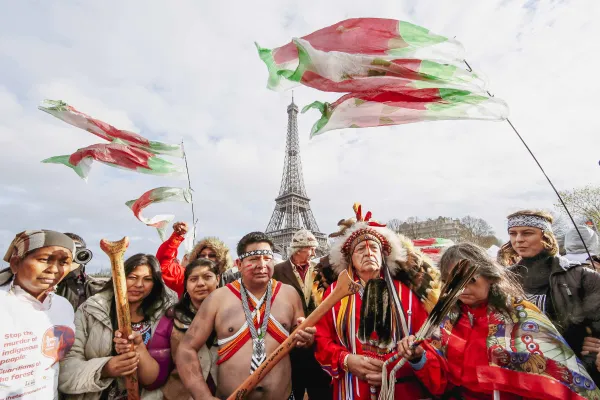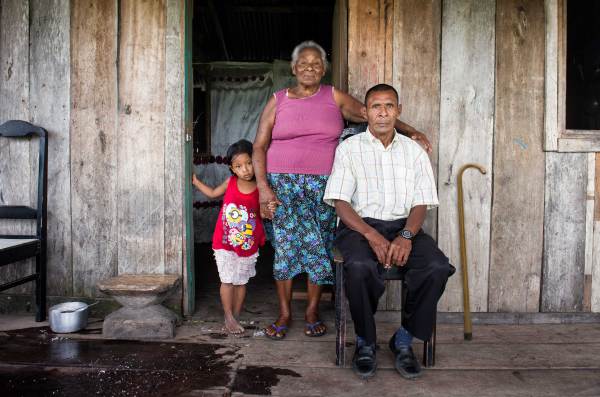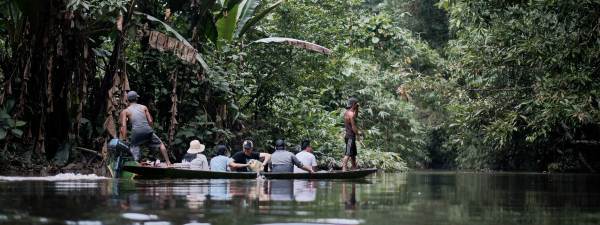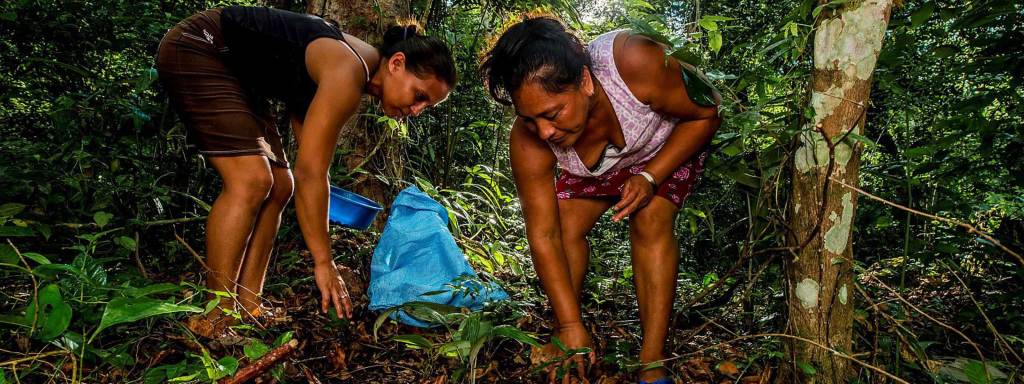 Sergio Izquierdo
Sergio IzquierdoHe can laugh about it now, but for years Marcedonio Cortave couldn’t bear to think about the afternoon in 1995 when he was humiliated before his fellow Guatemalan farmers and chicle tappers. The setting was a meeting involving the Maya Biosphere Reserve, an 8,340-square-mile expanse in the northern Petén department that the government had set aside five years earlier to preserve its pristine rainforest and resident jaguars, pumas, tapirs, and 300-some species of birds. Cortave was there as part of a delegation of forest community representatives. Together, they had made the case that their communities should remain living in the forest and continue sourcing fuelwood and the milky latex that had provided their livelihoods for as long as anyone could remember. But the industry executive who spoke after him had a different idea.
After playing a slick video juxtaposing smiling employees tending state-of-the-art tree nurseries with local campesinos chopping down trees and setting the forest aflame, the executive told the assembled crowd that what the communities of the Petén needed was investment and technical capacity—neither of which a lowly chicle tapper would be able to provide. “If you were to take any one of these community representatives,” he concluded, turning his gaze toward Cortave and the modest community leaders, “and hold him upside down, you would see that no money falls from his pockets. Could these guys even afford the bus fare back to their villages?”
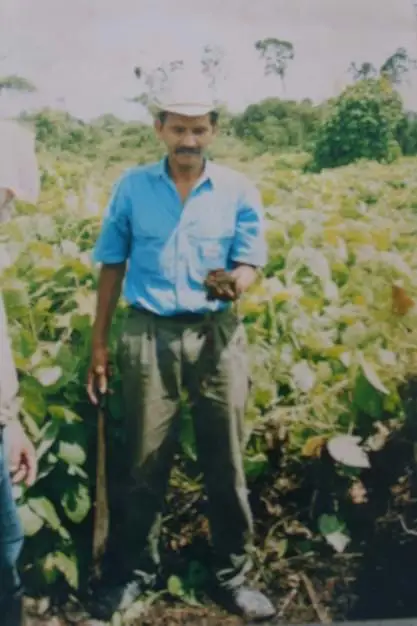
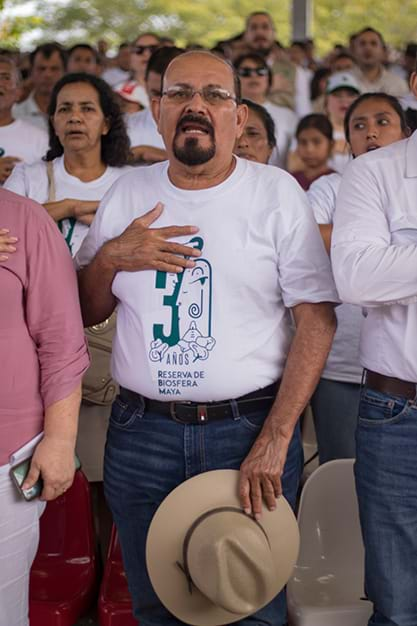
Now, 25 years later, Cortave—who admits that he was so poor back then he sometimes survived on a couple of bananas a day—proudly serves as executive director of the Association of Forest Communities of the Petén, or ACOFOP, one of the most successful and longstanding examples of community-based sustainable forest management in the world. Since the founding, two years after that harrowing meeting, the Indigenous and forest communities of ACOFOP, which the Ford Foundation has funded since 1999, have protected their forests from illegal logging and other threats while forging cohesive and lucrative enterprises in the process.
In an age of climate change, ACOFOP’s success serves as a win for us all. At the current rate of carbon dioxide emissions, we will reach the climate tipping point within 20 to 25 years. To mitigate climate change, we must both protect and restore the world’s forests, which capture and reduce emissions, and decarbonize and abandon fossil fuel. While fires routinely rage across much of the Reserve, forests managed by ACOFOP’s communities suffer less tree loss and sequester more carbon than other forests, including those under government protection.
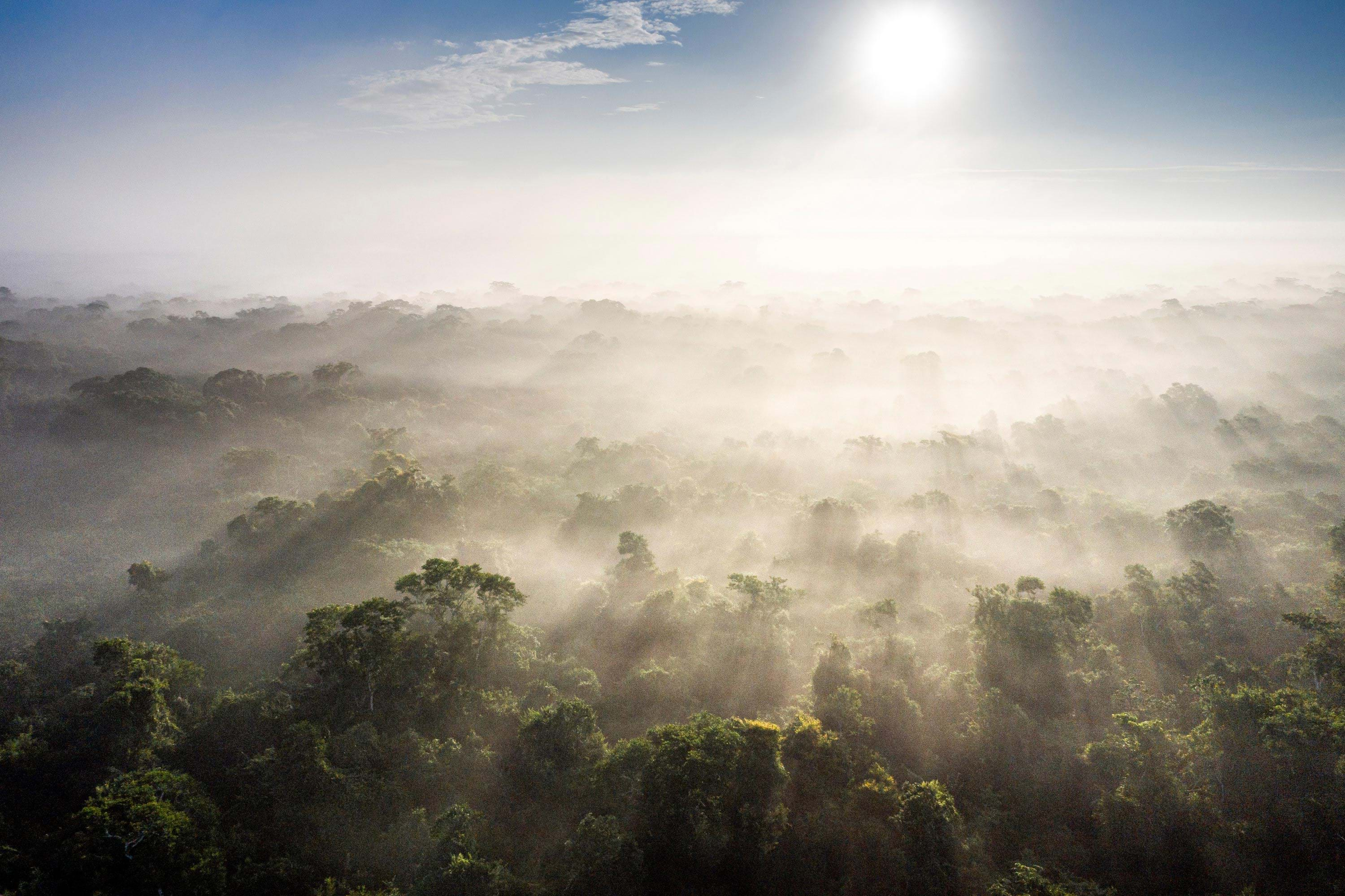
There is also the Coronavirus connection. Over the last year, a global alliance of Indigenous and forest communities, of which ACOFOP is a member, highlighted how the same forest destruction driving climate change is also driving the rise of pandemics. Deforestation and human activity have disturbed the natural ecology of the world’s forests, increasing the risk of animal-to-human transfer of diseases.
Yet a quarter-century into their existence, the ACOFOP concessions remain dangerously under siege, threatened by outside forces and by a highly volatile institutional context, where any government may or may not choose to defend their continued existence.
A fraught history, with a long shadow
Beginning in 1960, inequities in Guatemala’s land distribution—combined with a long history of discrimination against the Indigenous peoples who account for 43 percent of the country’s population—culminated in a devasting civil war. The unrest went on for 36 years, taking some 200,000 lives—Cortave’s brother among them—in the process. (It’s for this reason that my own childhood was spent outside my Guatemalan homeland.)
Much of the fighting took place in the Petén, where, due to previous government policies, the indigenous Maya peoples were living uneasily alongside transplants from across Guatemala and neighboring countries. The 1996 Peace Accord included provisions for land reform, and Cortave and the forest communities were determined that their vision for community-managed forests should find a place among them. While most conservationists argued that the country’s forests should be declared national parks and overseen by strict government protection, they believed people residing in and deriving a living from the forests had the strongest incentive to protect them.
Accessibility Statement
- All videos produced by the Ford Foundation since 2020 include captions and downloadable transcripts. For videos where visuals require additional understanding, we offer audio-described versions.
- We are continuing to make videos produced prior to 2020 accessible.
- Videos from third-party sources (those not produced by the Ford Foundation) may not have captions, accessible transcripts, or audio descriptions.
- To improve accessibility beyond our site, we’ve created a free video accessibility WordPress plug-in.
Cortave and the leaders spent painstaking years cultivating colleagues and forging alliances among a population so traumatized by war and riven by classism, extreme poverty, and racism that most people weren’t inclined to engage at all. At the same time, they plead their case with government officials, including those from the National Council for Protected Areas, or CONAP, which oversees the Biosphere Reserve. By 2001, ACOFOP had managed to secure 12 forest-concession contracts from CONAP. The 25-year agreements, which entrusted management of the land to the diverse communities residing upon it, covered a total of 500,000 hectares, about a fifth of the entire Reserve.
A model unique in the world
Each of ACOFOP’s member organizations—whether cooperatives, limited liability companies or nonprofits—establishes its own rules and business plans for managing its forests, though they are all required to submit annual fire-prevention, control-and-surveillance, and investment plans to CONAP. The communities also regulate their activities according to the rigorous standards of the Forest Stewardship Council, a globally recognized sustainability framework whose certification confers legitimacy—and the improved market value that comes with it. In Uaxactún, for instance, a 200,000-acre concession located north of the ancient Mayan city of Tikal, community members harvest just 600 trees a year, ensuring the continued health of the forest.
ACOFOP also provides members with cutting-edge technology, like drones and GPS trackers, and trains them to help them monitor the land and respond to emergencies. In addition, ACOFOP continues to liaise with with the national government on behalf of the concession communities, and it helps them develop and market their forest resources, which, in addition to chicle, include mahogany, cedar, and such non-timber products as xate palm leaves (popular in floral arrangements), allspice, and locally prized ramón nuts.
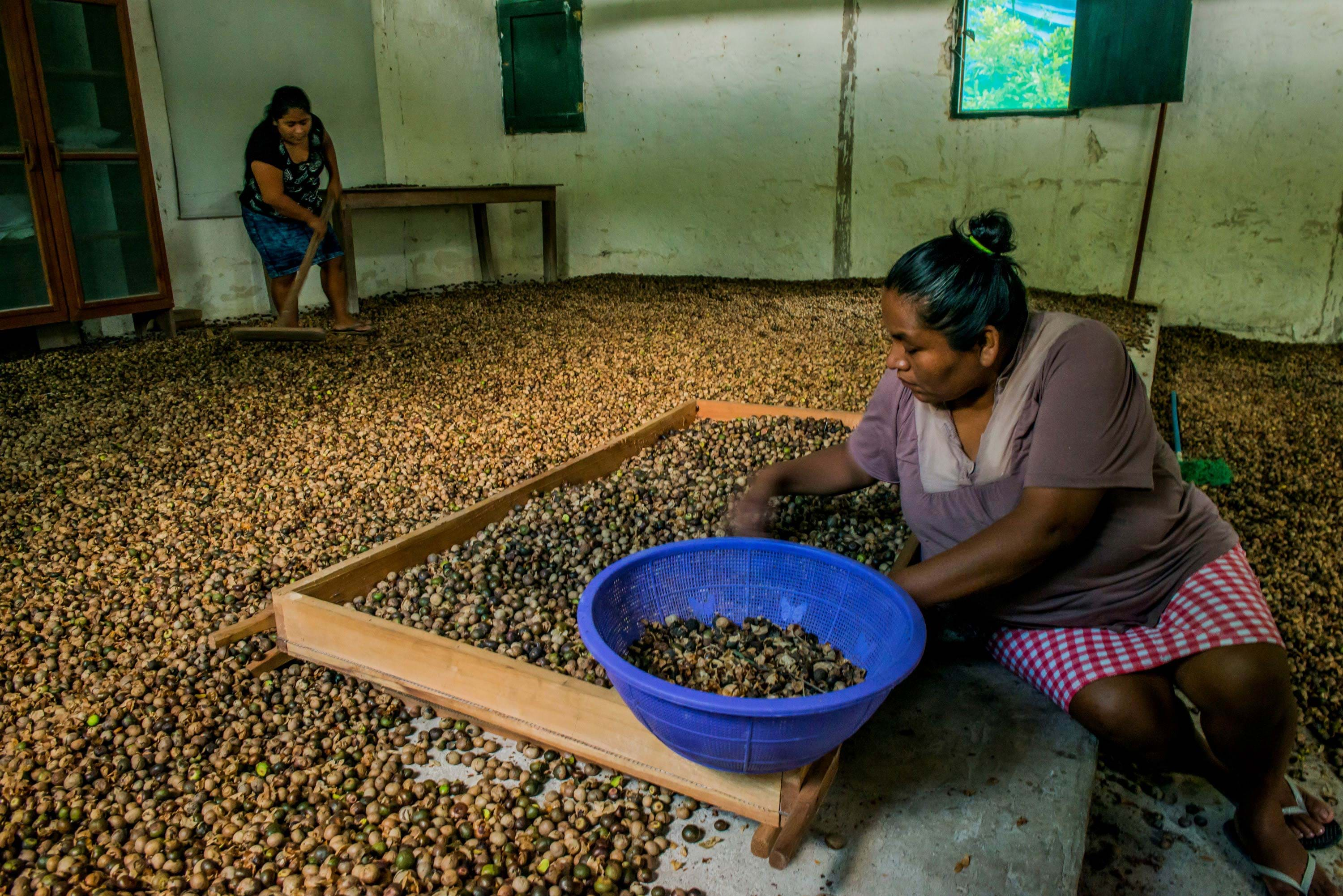
It hasn’t always been easy. Two concessions fell apart after community members succumbed to intimidation by invading ranchers, and industry interests are constantly lobbying the government to hand over some of the land—but, over the years, the groups have seen their fortunes flourish, with support from government, civil society, and other allies like the Rainforest Alliance.
Progressing from simply exporting raw materials to establishing their own sawmills and selling finished wood for use in flooring and guitars has meant increasing incomes and less reliance on a few products. Some communities have begun diversifying the types of timber they harvest, while others are beginning to explore the commercial sourcing of medicinal plants and forest flowers such as orchids, and younger generations are even working to develop organic cosmetics. Those situated near archaeological sites have established tourism operations, thereby ensuring other revenue streams. In Carmelita, for example, located near the Mayan ruins at El Mirador, in the far north of the Petén, the locals run low-impact treks, providing equipment and guides for the three-day journey to the site. In 2003, some of the concessions groups got together to create Forescom, a community-owned company that provides assistance with wood-processing, financing, and marketing.
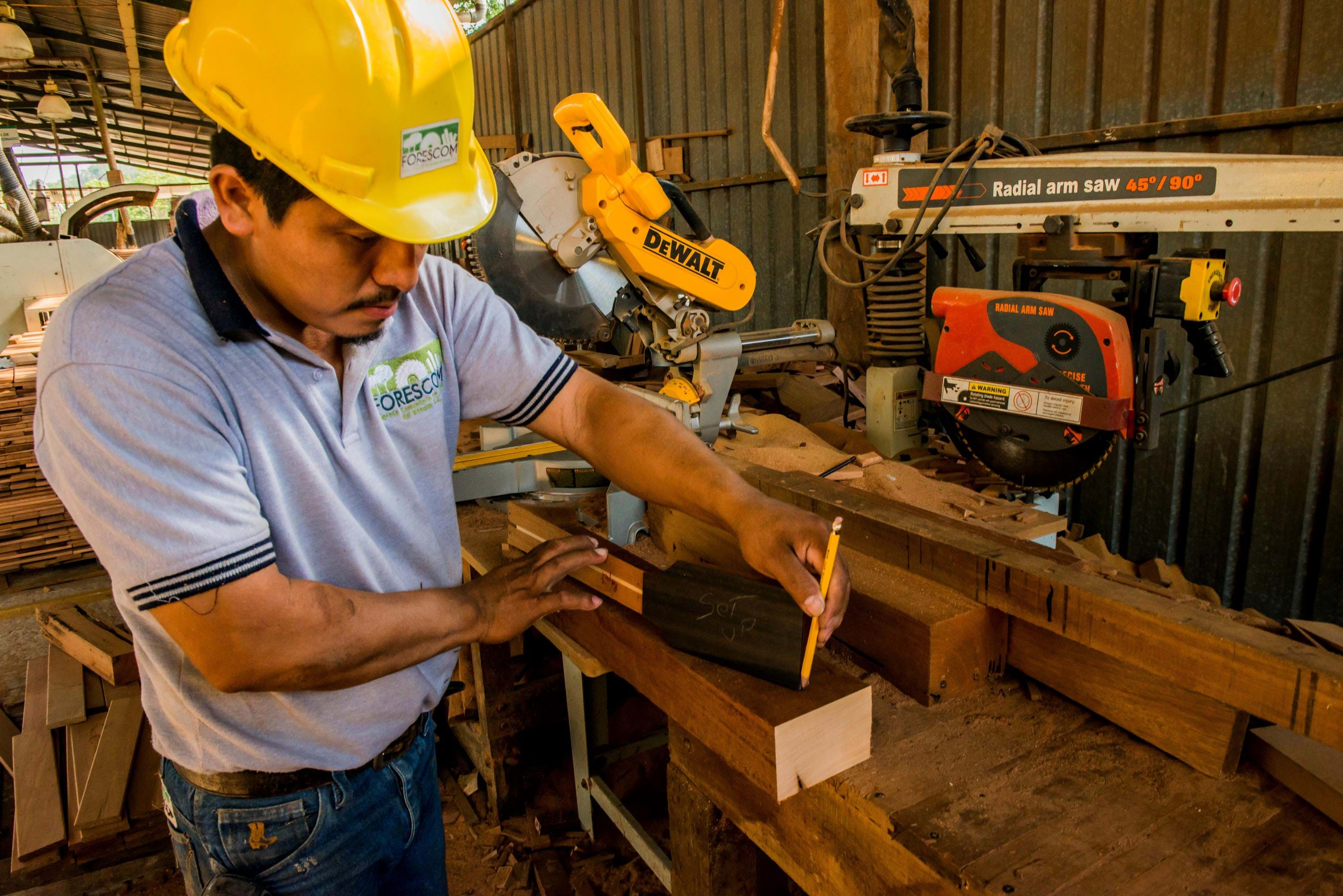
In the process, the diverse communities have come to trust one another, overcoming deep divisions and lingering prejudice against Indigenous populations in a situation that remains unique in Guatemala.
Successes that accrue to us all
Between 2007 and 2018, ACOFOP member organizations sold almost $60 million in forest products, with some $5 million in sales in 2018. Such goods account for 40 percent of their total income, according to Juventino Galvez, who formerly served as secretary of CONAP, and in some cases that figure rises to 60 percent—more than the remittances arriving from abroad that support so many in this impoverished country. The wages from forest activities and tourism gigs such as cook and driver can be as much as three times higher than those earned by other rural Guatemalans.
Since signing the contracts, the communities have paid more than $2 million in taxes, money the national government can use for infrastructure and services that benefit all Guatemalans. But they also re-invest at home, building schools and health clinics that they had long survived without. In addition to helping with campaign efforts that amplify community voices to government officials and strengthening member institutions, ACOFOP provides a diverse range of services to respond to a community’s changing needs, said Andrew Davis, a researcher for the PRISMA Foundation, which helps communities across Latin America manage their natural resources. One of its leaders might lend a vehicle to rush someone to the hospital, for instance, or help out with cash in an emergency.
“That’s really key for the collective action between the communities,” he said. “That kind of trust-building is the foundation of what keeps the process going.”
These days, thanks to the ACOFOP concessions’ success—increased livelihoods and health and education gains as well as wins on the biodiversity and climate-change fronts—visitors from forest communities in countries like Indonesia, Brazil, and Colombia, come to learn by example. After spending days touring the concessions and speaking with community leaders, they return home armed with information about how to organize their own communities, lobby their governments, secure markets, and pool resources to invest in sawmills and other infrastructure that can help add value to their forest resources.
Though Davis acknowledges there are challenges in other regions. Securing land rights and establishing a model similar to ACOFOP is a long, involved and precarious process that requires tireless commitment, the coordination of multiple partners, from local communities to government officials, and a significant amount of resources. Stakeholders not only have to make their case amidst a volatile political context and institutional fragility but, even when rights are secured, the fight to keep them never ends. Iliana Monterroso, a Guatemala-born environmental scientist with the Center for International Forestry Research, offered the example of Peru, where, despite laws on the books recognizing Indigenous land rights, forest communities struggle to reap benefits because of a lack of support from governments, nonprofits, and others. Some of the Indigenous people she works with there told her, “We cannot eat the title, this piece of paper.” They know all too well the work only begins with the land title.
A perilous future
Twenty-five years in, as the Petén concession agreements are set to be renegotiated, multiple threats remain. In the west of the Maya Biosphere Reserve, along the border with Mexico, petroleum interests are eyeing deposits for potential drilling. Across the Petén, forests continue to be razed by large agribusiness to establish oil palm plantations, while drug cartels set up cattle ranches, build transit routes or secret landing strips, and launder illicit cash. A 2020 study found that up to 87 percent of the deforestation in the region was due to such illegal ranching. Paying off a park ranger is a whole lot easier, after all, than infiltrating an entire community whose livelihoods depend on their ability to keep their forests standing. (ACOFOP communities spend a combined half-million dollars annually to patrol their forests with drones and GPS trackers.)
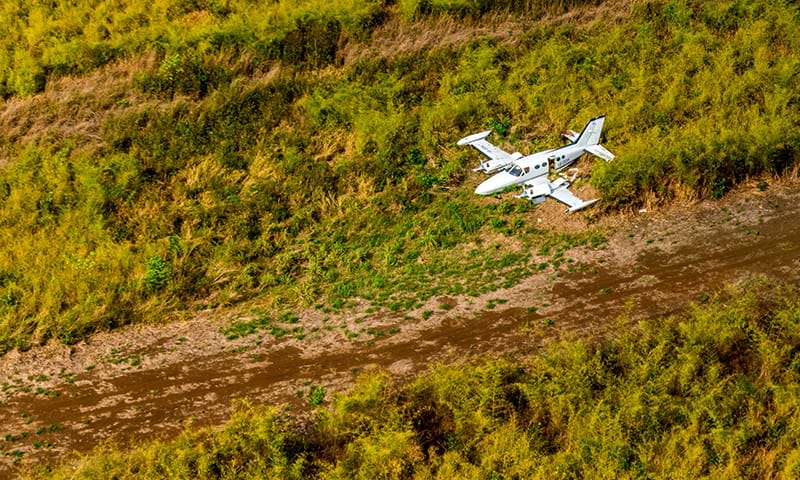
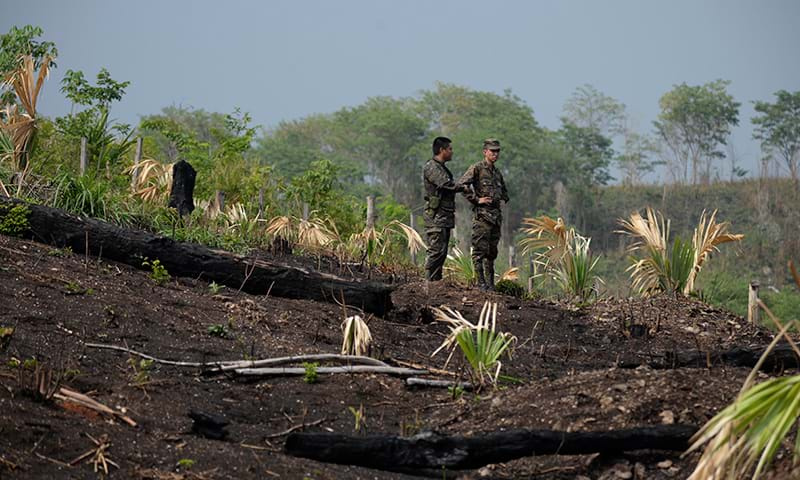
Since 2001, another threat looms in the form of a proposed tourism project. American archeologist Richard Hansen, who has worked in the region for three decades, has made at least four attempts to influence legislation that would enable him to develop a tourism project around El Mirador. Alleging that the forests around the archaeological site are threatened by illegal logging, drug trafficking, and deforestation by smallholder farmers, the arguments for the project neglects not only the importance but the very existence of the forest communities of ACOFOP, trying to make them invisible. “It’s one of my criticisms of the Guatemalans, there’s no vision,” Hansen said in a VICE interview. Hansen suggests that the only way to protect it is through his plan—one involving five-star hotels, visitor centers, and a miniature train like the ones that snake through Disneyland.
Though prominent Guatemalan archeologists have spoken out against the proposed project, it has gained the support of various conservation groups and elite politicians. And Hansen may be getting closer to realizing his dream: In December of 2019, James Inhofe, a senator from Oklahoma, introduced a bill, which would make $60 million in American taxpayer money available for security and tourism development in Guatemala and parts of Mexico. The El Mirador project might entail a change to the CONAP contracts and likely absorb more than half of the Uaxactún concession and more than half of the one in Carmelita.
“We have to do everything we can to make the concessions more secure so that the communities can just focus on defending their forests,” he said. “Because defending the forest is a huge task.”
“They sit on really valuable land that’s coveted by very powerful people,” said Davis, adding that the situation requires constant investments of time and money simply to secure the concessions’ right to exist. In 2002, for example, lobbying for the project resulted in an executive order that required a significant amount of ACOFOP resources—involving travel to Guatemala City to have permanent conversations with national authorities—in order to amplify their achievements to get it overturned. But every change in government could mean a new head of CONAP, one who may or may not be enthusiastic about the community-based forest program.
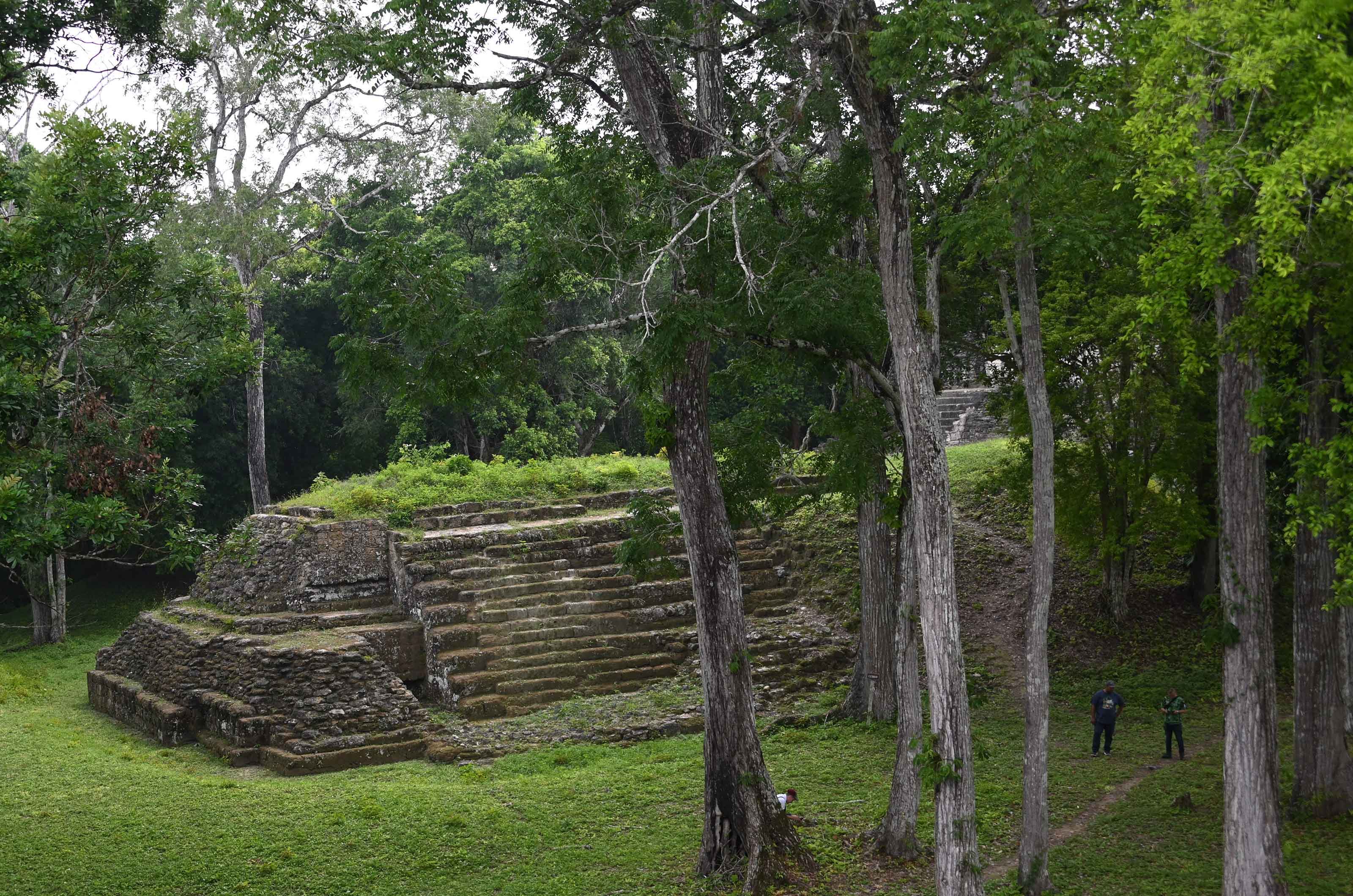
Most recently, Guatemala’s government has stated their support for the ACOFOP model, with two of the nine concessions already renewed. As the renewal process continues, ACOFOP is advocating to gain more concessions for community groups in the Reserve. “We have to do everything we can to make the concessions more secure so that the communities can just focus on defending their forests,” he said. “Because defending the forest is a huge task.”
A society in flux
There are also threats from within, including the potential for the groups to fall victim to their own success. One of the concession companies, for example, has seen its membership shrink from 60 to 30, as older shareholders begin to buy one another out. In other communities, the original members are aging, and some of their children, thanks in part to the education their parents provided, have gone off to university or developed careers in the city and have no intention of coming back to carry on the work of protecting their land.
To stave off such entropy and ensure the concessions’ success into the future, some of the groups have begun amending such patriarchal rules as the one stipulating that shares can only be inherited by a first-born son. ACOFOP has stepped up its own outreach efforts, in particular to the female, Indigenous, and non-binary members of its communities. Among those participating in its 500-strong Women’s Network is a 32-year-old Uaxactún native named Carolina Alvarado, who also sits on her concession’s seven-person board. “I tell all the women,” said Alvarado, “‘If you grew up in Uaxatún, you are a part of the organization, and you are very important.’“ It’s these new members, she added, who tend to bring fresh ideas.
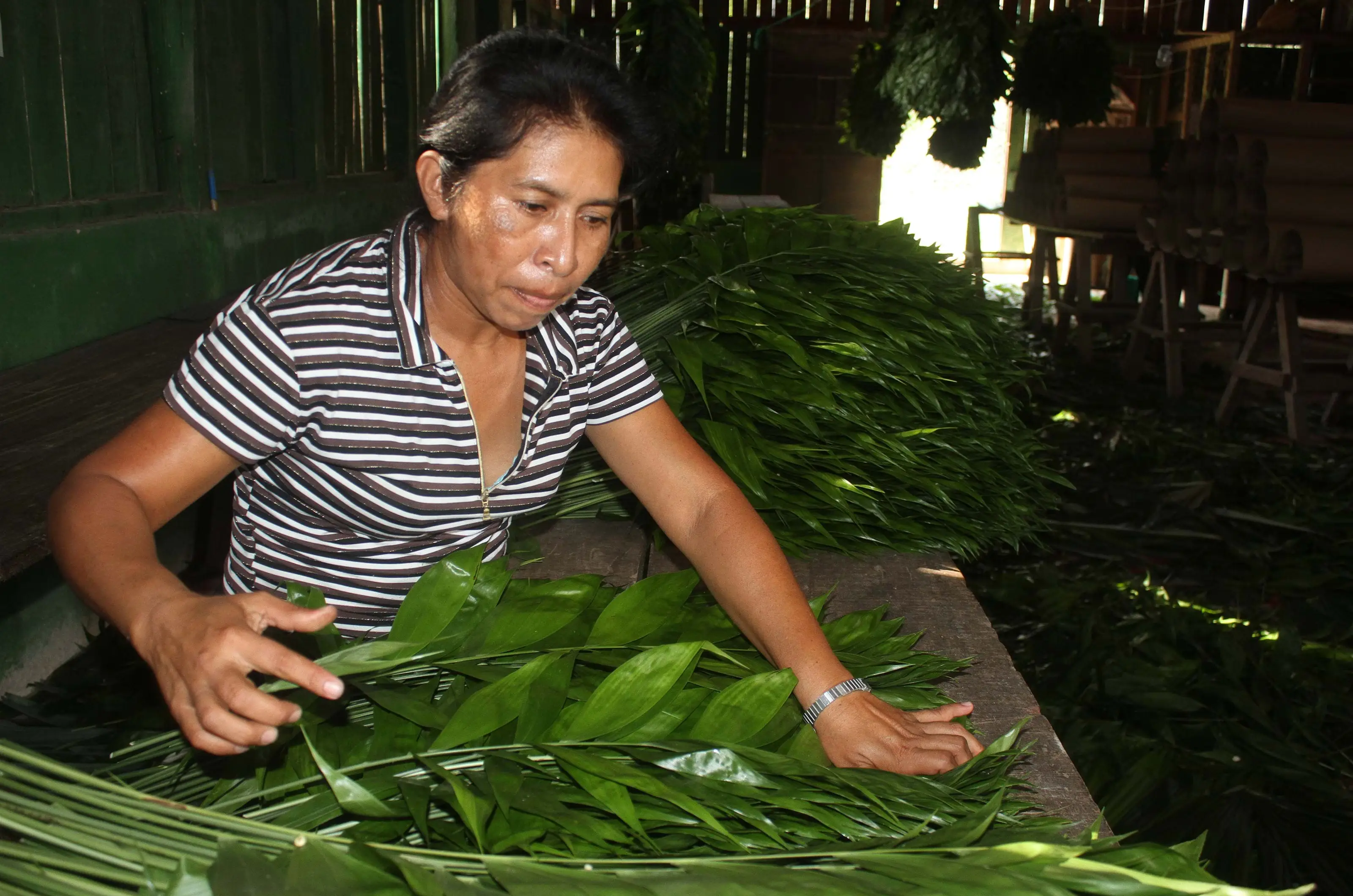
“We need to understand that we are a multicultural community,” said Alvarado,“we are diverse, and that is a richness, a wealth in terms of our culture and our social value.“
Like the concession agreements themselves, Guatemala’s post-conflict government is just 25 years old, and the country’s still-scarred people are straining to build a multicultural, egalitarian society in the face of rampant state corruption and impunity. “The way the power structure works,” said Davis, “there’s a constant struggle for resources that is increasingly mediated by force and violence and not by institutions. So while the forest communities of the Petén are showing the world that they’re contributing to society and conserving the forests, those arguments can only go so far in this very volatile institutional and political context.”
Which is why global support is so critical. As awareness about the importance of tropical rainforests in the battle against climate change grows—and in the face of mounting evidence that Indigenous and local communities are such forests’ best stewards—the philanthropic world must continue to empower groups like ACOFOP. Helping the often-fragile governments that oversee such treasured natural resources will also be key, whether through funding tied to sustainability efforts, improved trade and drug policies, or other governance measures. Climate change and inequality are inextricably bound, and we need to recognize that who owns, controls, and benefits from natural resources determines the future of the land—and the communities who call it home. By supporting those guardians—local and indigenous peoples—we protect our forests and the planet. As Cortave recently pointed out, “The trees don’t fight each other; they know how to live in perfect harmony. It’s when the humans get involved that things get complicated.”

